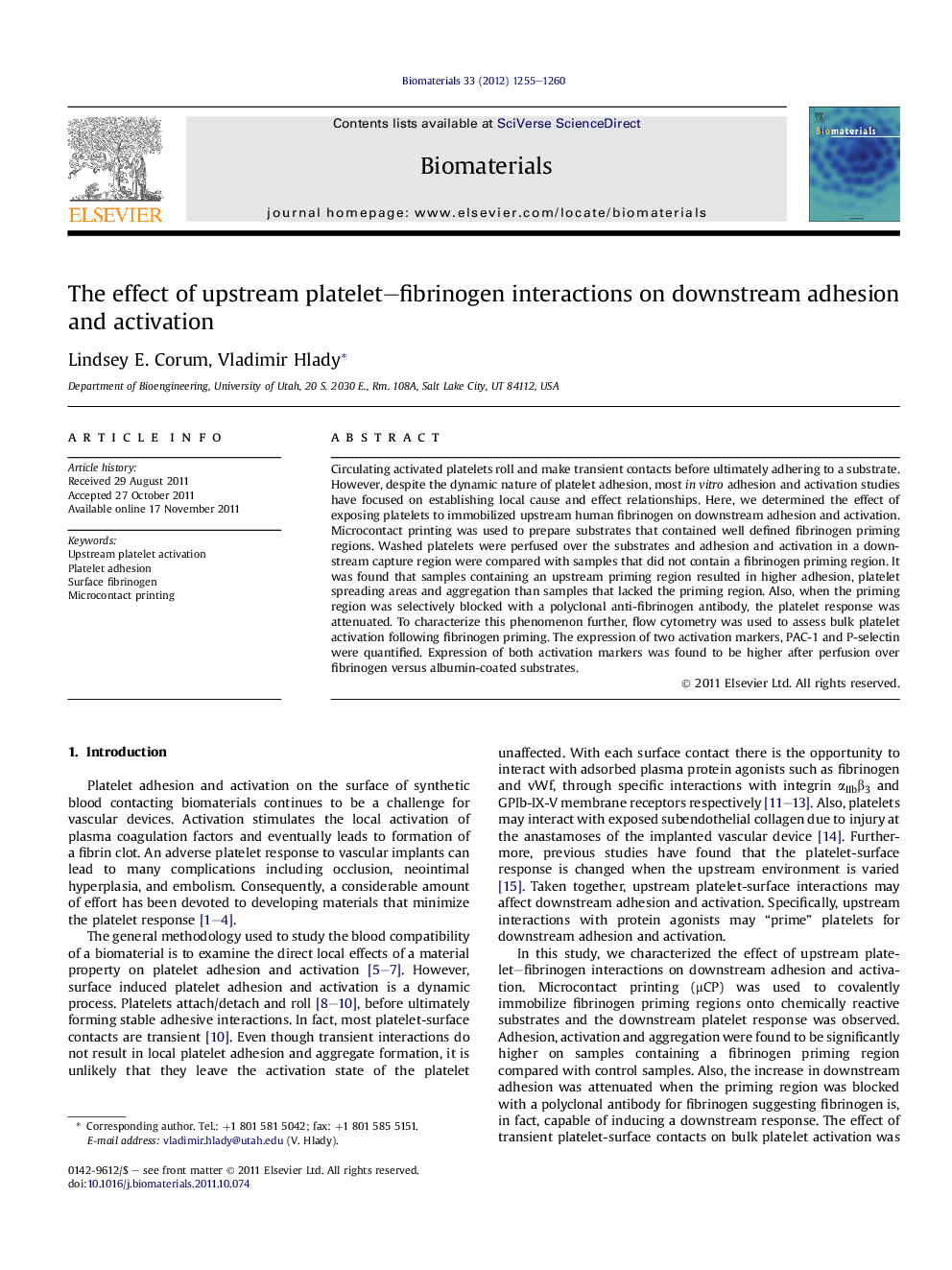| Article ID | Journal | Published Year | Pages | File Type |
|---|---|---|---|---|
| 10229790 | Biomaterials | 2012 | 6 Pages |
Abstract
Circulating activated platelets roll and make transient contacts before ultimately adhering to a substrate. However, despite the dynamic nature of platelet adhesion, most in vitro adhesion and activation studies have focused on establishing local cause and effect relationships. Here, we determined the effect of exposing platelets to immobilized upstream human fibrinogen on downstream adhesion and activation. Microcontact printing was used to prepare substrates that contained well defined fibrinogen priming regions. Washed platelets were perfused over the substrates and adhesion and activation in a downstream capture region were compared with samples that did not contain a fibrinogen priming region. It was found that samples containing an upstream priming region resulted in higher adhesion, platelet spreading areas and aggregation than samples that lacked the priming region. Also, when the priming region was selectively blocked with a polyclonal anti-fibrinogen antibody, the platelet response was attenuated. To characterize this phenomenon further, flow cytometry was used to assess bulk platelet activation following fibrinogen priming. The expression of two activation markers, PAC-1 and P-selectin were quantified. Expression of both activation markers was found to be higher after perfusion over fibrinogen versus albumin-coated substrates.
Related Topics
Physical Sciences and Engineering
Chemical Engineering
Bioengineering
Authors
Lindsey E. Corum, Vladimir Hlady,
